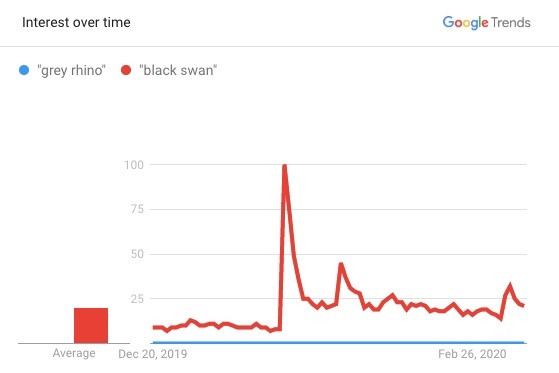Are you using the wrong animal metaphor to describe the coronavirus crisis? In recent weeks, headlines about COVID-19 have been full of so-called experts describing the pandemic as a “black swan,” a metaphor for an extremely rare event that is unforeseen and has an enormous impact. It was coined by economist Nassim Nicholas Taleb in 2001—inspired by a 2nd-century Roman poet who presumed that such birds didn’t exist—and has been applied to such disparate outliers as the 9/11 attacks and the development of the internet.
Since the coronavirus was first reported by Chinese authorities to the World Health Organization, the term has been used extensively in stories. If you search Google News for “black swan” and coronavirus, you’ll get over 180,000 results.

But true linguists say that the proper metaphor for the crisis is a “gray rhino,” which refers to highly probable but neglected threats that have an enormous impact. It was coined by Michele Wucker, a policy analyst who came up with the term after the 2012 Greek financial crisis.
Regarding this crisis, Wucker recently wrote: “Given what we know about pandemics and their increasing likelihood, outbreaks are highly probable and high impact. I coined the term “gray rhino” for exactly such events: obvious, visible, coming right at you, with large potential impact and highly probable consequences.”
(39)